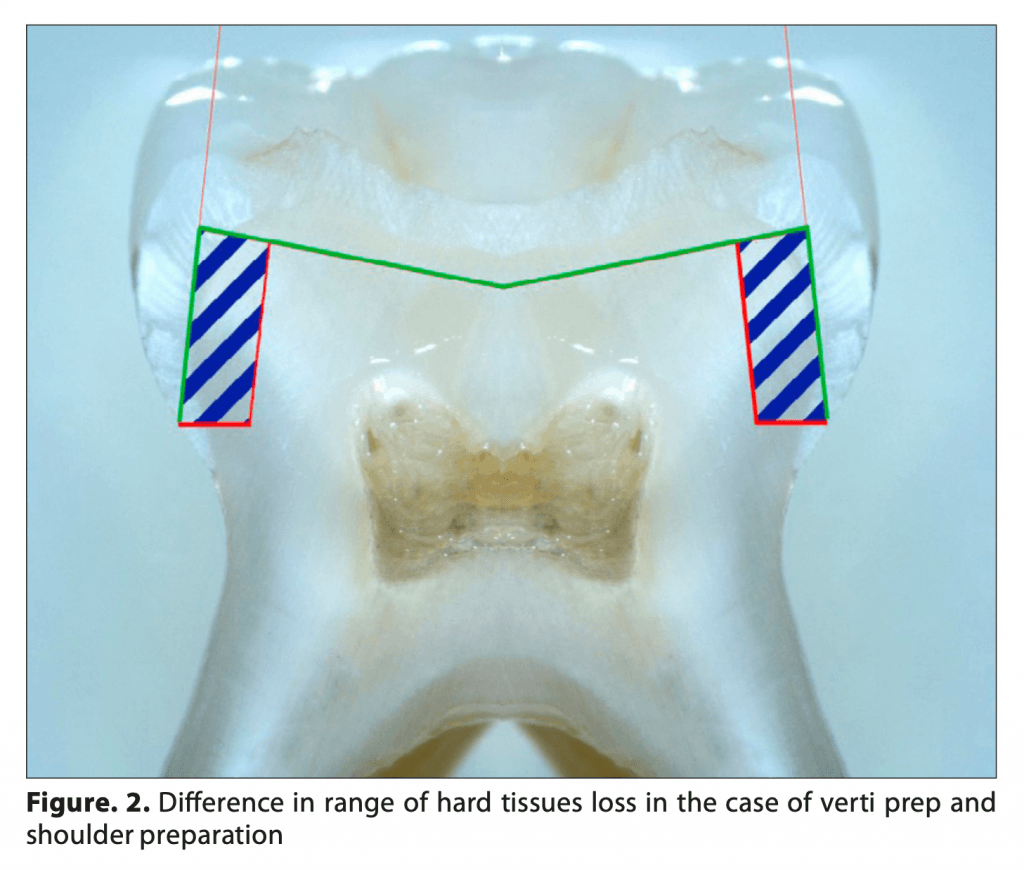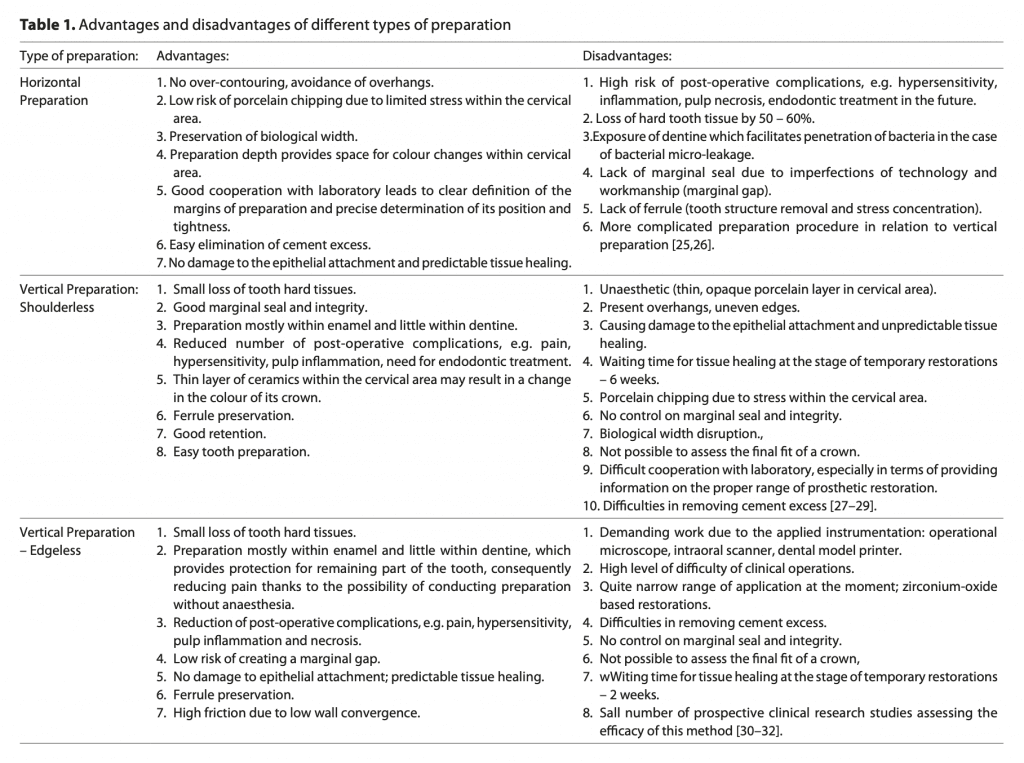A summary of: Łabno, P. and Drobnik, K. 2020. Comparison of horizontal and vertical methods of tooth preparation for a prosthetic crown. Journal of Pre-Clinical and Clinical Research.
The article compares the pros and cons of several types of tooth preparations for different kinds of crowns, including the modern concept of verti prep (vertical preparation).
Tooth preparation for a prosthetic crown is always invasive in character and leads to irreversible loss of tooth hard tissues. In the case of tooth preparation with vital dental pulp there is a risk of its irritation, inflammation, necrosis, and endodontic treatment in the future. A variety of attempts have been made in dental prosthetics to develop the best method of tooth preparation, which – on the one hand – would ensure adequate marginal fit, emergency profile, and at the same time, would lead to the least loss of enamel and dentine in the preparation process. Current research has confirmed, that there is no single universal and recommended in all cases type of tooth preparation for a prosthetic crown. The choice of a finish line depends on a number of factors, such as pulp vitality, location of the tooth, its inclination, type of material from which a restoration will be manufactured, crown convexity, patient’s age and the size of such a construction. It should be emphasized at the same time that in some clinical situations, the decision on the type of preparation and/or reconstruction to be made is taken intra-procedurally.
Types of margin preparation:
1) Vertical preparation:
- edgeless;
- shoulderless (bevel): feather edge / knife edge / chisel edge (rising taper).
2) Horizontal preparation:
- straight shoulder-type preparation at 90° angle (regular shoulder);
- straight shoulder-type preparation at a 90° angle with a 45° bevelling (bevelled shoulder);
- rounded shoulder-type preparation at 90° angle (rounded shoulder);
- straight, rounded shoulder-type preparation with 45° angle bevelling (bevelled rounded shoulder);
- open chamfer-type preparation (regular chamfer);
- open chamfer-type preparation with 45° angle inclination.
Tissues destruction comparison:
Tissues outside the green lines are lost during vertical preparation and those outside of the rethe case of verti prep and shoulder preparation are marked with a blue pattern.

Summary of advantages and disadvantages:

Conclusion:
Current research has confirmed that there is no single universal and recommended method in all cases type of tooth preparation for a prosthetic crown. The choice of a finish line depends on a number of factors, such as pulp vitality, location of the tooth, its inclination, type of material from which a restoration will be manufactured, crown convexity, patient’s age, and size of such a construction. At the same time, it should be emphasized that in some clinical situations, such as abutment discoloration or insufficient amount of tooth structures visible after an old crown removal, the decision on the type of preparation and/or reconstruction to be made is taken intra-procedurally.
Summary by Nafeesa Khan, University of Liverpool, BDS 4
